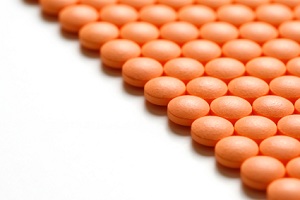Lomotil

Brand name(s): Lomotil, Lonox
Generic name: diphenoxylate HCl/atropine sulfate
Preparations: tablet
Uses for IBS:
Lomotil, or diphenoxylate, is an opiate drug that is structurally related to meperidine (an opoid analgesic). It is a mixture of atropine and diphenoxylate. Atropine was added to discourage deliberate abuse or overdosage of diphenoxylate. Lomotil, like Imodium (loperamide) is used to treat travelers’ diarrhea as well as diarrhea-predominant IBS.
Diphenoxylate exerts its effects on the smooth muscle of the GI tract by inhibiting GI motility and slowing down excess GI propulsion. At treatment does, diphenoxylate dos not possess opiate-like effects or analgesic activity. However, at higher doses, it can cause physical dependence and euphoria. Withdrawal symptoms can occur if opiate antagonists are taken with diphenoxylate, an opiate agonist. In adults ,atropine does not produce its anticholinergic effects when taken at normal doses; however signs of atropinism (e.g., dryness of the skin and mucous membranes, and tachycardia) can occur in children at recommended doses, so precaution is needed.
Contraindications
There are certain drugs that should not be taken with Lomotil because of severe adverse drug reactions: ambenonium (Mytelase, for myasthenia gravis), potassium chloride, pramlintide (Symlin, a diabetes drug), arbutamine (Genesa), and naltrexone (opiate antagonist),
Severe or moderate drug interactions can occur with: monomine oxidase inhibitors (antidepressants, like serotonin), phenothiazines (psychiatric drug), and nalbuphine (pain narcotic).
People with the following conditions should avoid Lomotil:
Achalasia of esophagus, atonic colon; obstruction of the bladder, urinary tract, gastrointestinal system, or liver; hemorrhage with cardiovascular instability; mothers who breast-feed; Myasthenia Gravis; myocardial dysfunction; paralytic ileus; Pseudomembranous enterocolitis; thyrotoxicosis; toxic megacolon, toxin-mediated diarrhea; and uropathy.
Adverse Reactions:
Central nervous system effects have been reported with diphenoxulate and include drowsiness, dizziness, and headache. Minor gastrointestinal effects that have been reported include nausea and vomiting, dry mouth, decreased appetite, and abdominal pain or discomfort. Severe reactions include toxic megacolon, adynamic ileus, and pancreatitis.
Although the atropine component of Lomotil is low, atropism (dryness of the skin and mucous membranes, tachycardia, urinary retention, and hyperthermia) has been reported, particularly in children under 2 years of age and children with Down’s syndrome. Children and the elderly are at an increased risk for developing respiratory depression caused by diphenoxylate.
